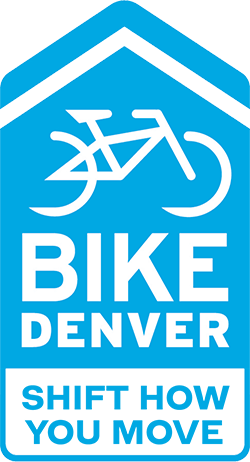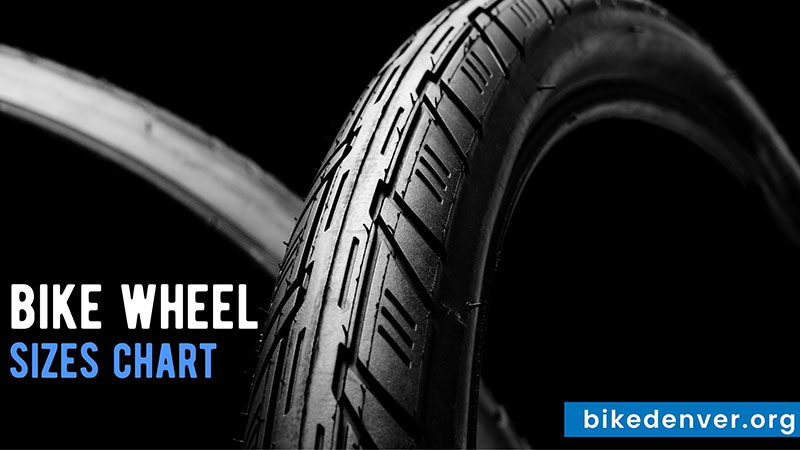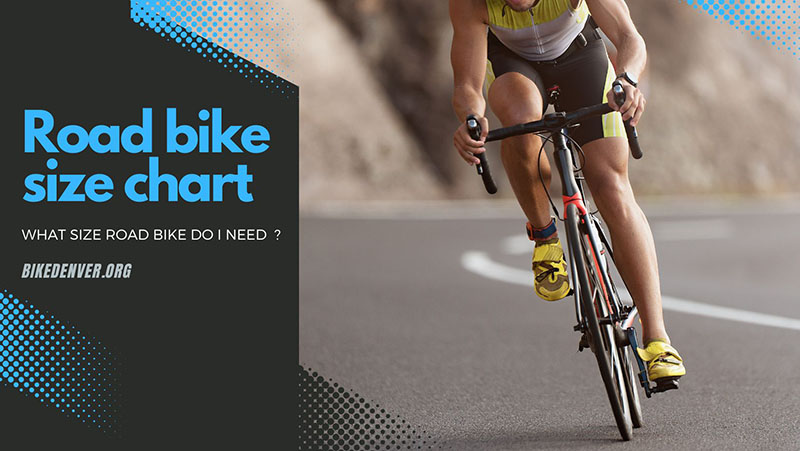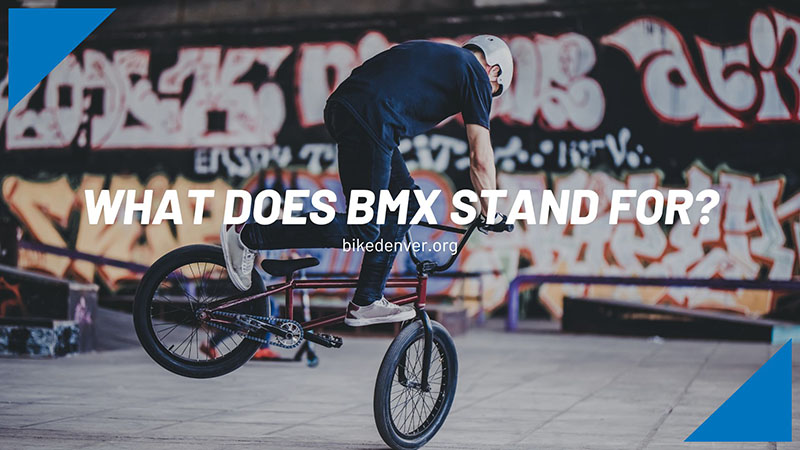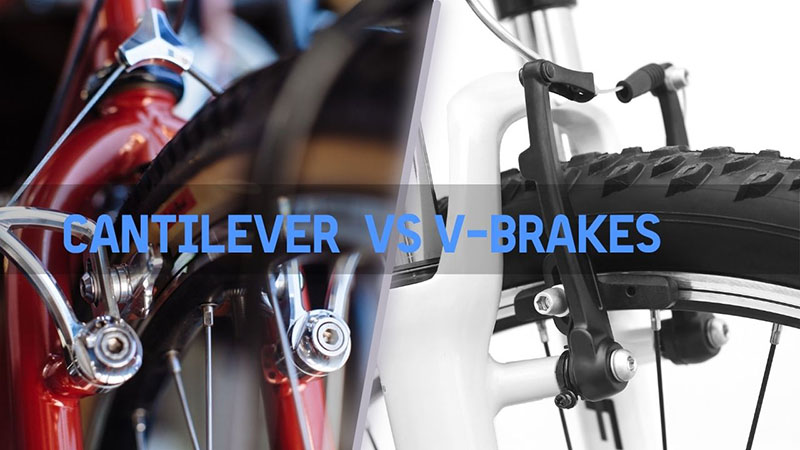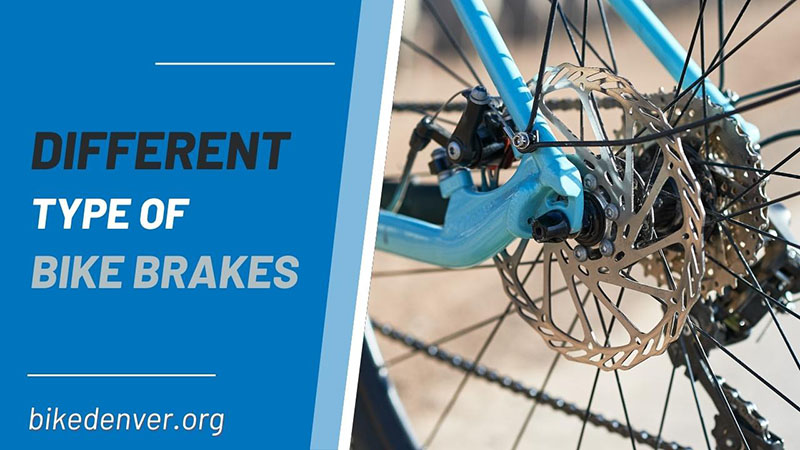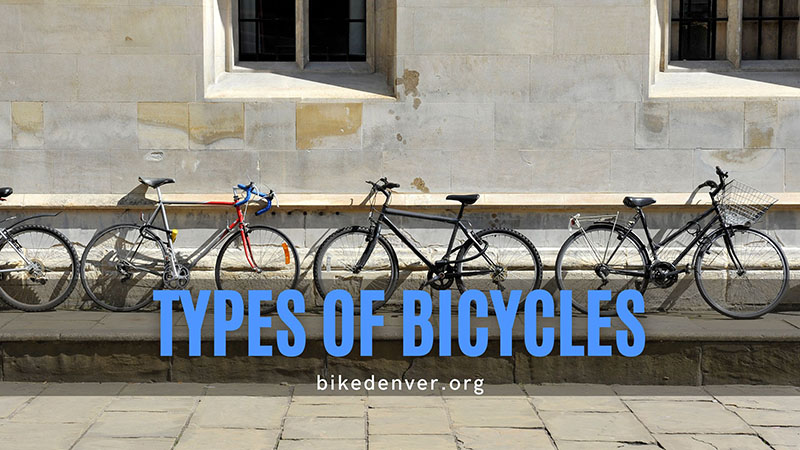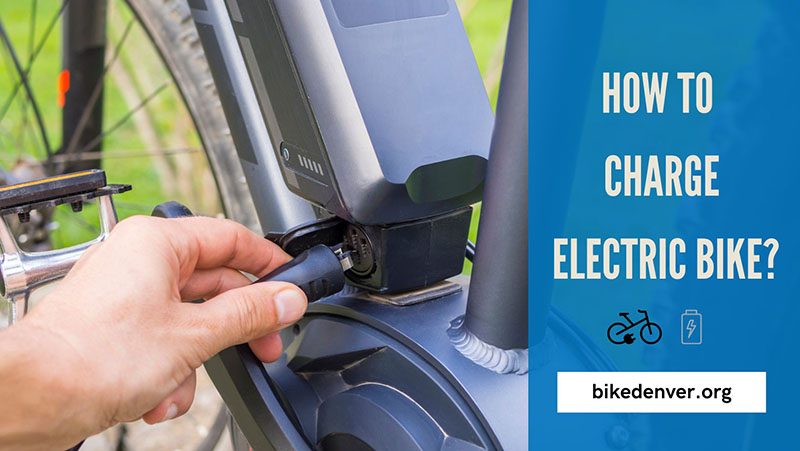Numerous factors come into play if riders want to decide on the best bike option. Among them, the bicycle wheel size is probably belittled by many, as buyers usually set their eyes on the bike’s appearance or suitable height. But enjoying your riding experience with a pair of ill-fit wheels would be impossible!
This detailed bike wheel size guide is crafted to deliver more insights into this regard, which provides inclusive charts on bike wheel specifications for every popular bicycle category. Other tips for a better and more comfortable ride are also covered.
Table of Contents
How to Read Bike Wheel Size?
Simple-minded readers would assume every wheel type only conforms to one measurement standard. That assumption is wrong; wheels can get assessed in more ways than you think, which might overwhelm novices who have just started getting familiarized with these specifications.
Some major bike-producing countries issued their individual methods to size bike wheels; hence, some bicycles with same-size labels might not actually share similar dimensions. To avoid further confusion, refer to the quick sum-up of these standards:
ISO (International Organizations for Standardization)
ISO is undoubtedly the most popular system to size tires and wheels of all vehicles, including bicycles. The measurements underwent development by European Tyres and Rim Technicality Organization (more commonly referred to as ETRTO).
ISO standards point to the wheel diameter in millimeters – instead of the tire’s dimensions you placed on it.
Overall, this ISO system displays two numbers. By illustration, a typical road bike’s tire size – according to ISO – is 661 x 24c (700 x 24c). 661 represents the rim or tire’s width in millimeters, carefully measured throughout the bead seats near the rim walls’ sidelines.
This gap is what most of us call “bead width.” Also, note that the measurement must occur when the tire is inflated.
On the other hand, 24c points to your BSD or bead seat diameter. Similarly, the calculation is carried out in millimeters, representing the distance or diameter between bead seats from the rim’s opposite sides.
JIS – Japanese Industry Standard Committee
Professionals claim that JIS’s role in Japan is quite similar to how ISO serves the rest of the world. That’s understandable; after all, JIS has issued standards for Japan’s industrial services since forever. It’s also a Japan member of ISO itself.
JIS standards for bike rims are JIS-D-9421, which corresponds to the ISO-5775-2:1996 in ISO. Hence, tire-speculation readings in ISO and JIS are more or less similar.
French Standards
French Standards mostly apply to vintage bicycle models, and the letters used here imply the wheel’s widths. For instance, 700C tires are a notch wider than 700B. In the same vein, 700 B’s width exceeds 700A.
It’s safe to say that only 700C is the most popular dimension for today’s road tires. Sometimes, 650Bs or 650Cs might show up, but most other letters have already been extinct at this point.
See also: 700c Wheel Size In Inches
American Standards
This inch-based concept is quite popular in mountain and children’s bikes distributed by huge retailers. It’s not difficult to hear them mention 24″ junior bikes, “20” child bikes, and so on.
The standard fractional size is 26×1 3/8-EA3, which translates to 37×590 in the ISO. “26” points to the diameter (inflated, of course). Meanwhile, the “1 3/8” indicates the widths.
What Wheel Size Bike Do I Need? A Complete Chart
As you can see, French and American standards are not that popular (some tire sizes have even ceased to exist nowadays), while JIS basically replaces ISO in Japan. Naturally, we adopt ISO as the common measurement criterion in this article.
Kids Bikes
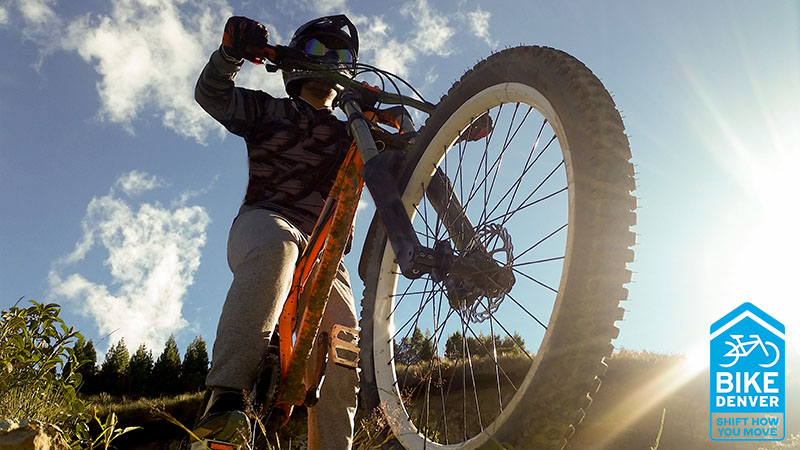
General
Some might assume there’s no need to be too picky about kids’ sizes compared to adults. But on the contrary, you need to ensure your child has utter ease while riding. Most children are not expressive when speaking out about their discomfort.
| Rider’s Height | Inseam (in Inches) | Suggested Bicycle Wheel Size | ||
| 2’10” to 3’4″ | 86 cm to 101 cm | 14″ to 17″ | 35 cm to 42 cm | 12″ Wheels |
| 3’1″ to 3’7″ | 94 cm to 109 cm | 16″ to 20″ | 40 cm to 50 cm | 14″ Wheels |
| 3’7″ to 4′ | 109 cm to 122 cm | 18″ to 22″ | 45 cm to 55 cm | 16″ Wheels |
| 3’9″ to 4’3″ | 114 cm to 130 cm | 20″ to 24″ | 50 cm to 60 cm | 18″ Wheels |
| 4’3″ to 4’5″ | 122 cm to 135 cm | 22″ to 25″ | 55 cm to 63 cm | 20″ Wheels |
| 4’5″ to 4’9″ | 135 cm to 145 cm | 24″ to 28″ | 60 cm to 72 cm | 24″ Wheels |
| 4’9″ onwards | 145 cm onwards | 28″ onwards | 72 cm onwards | 26″27.5″ or 700c Wheels (for adult bikes) |
Boys
The next chart is tailored specifically for boys from 2 to 12 yrs old. Once these boys reach 12, they will often want full-size bikes for adults. But, of course, whether they need them later or sooner than 12 also depends on how fast they grow.
| Rider’s Age | Rider’s Height | Suggested Bike WheelSize for Boys | |
| 2 yrs old | 34.2″ | 86.8 cm | 12-inch wheel |
| 3 yrs old | 37.5″ | 95.2 cm | 12-inch wheel |
| 4 yrs old | 40.3″ | 102.3 cm | 12-inch wheel |
| 5 yrs old | 43.0″ | 109.2 cm | 14″ to 16″ wheel |
| 6 yrs old | 45.5″ | 115.5 cm | 14 to 16″ wheel |
| 7 yrs old | 48.0″ | 121.9 cm | 18″ to 20″ wheel |
| 8 yrs old | 50.4″ | 128 cm | 18″ to 20″ wheel |
| 9 yrs old | 52.5″ | 133.3 cm | 18″ to 20″ wheels |
| 10 yrs old | 54.5″ | 138.4 cm | 24″ wheel |
| 11 yrs old | 56.5″ | 143.5 cm | 24″ wheel |
| 12 yrs old | 58.7″ | 149.1 cm | 26″, 27.5″ or 700c wheel (for adult bikes) |
Girls
Here is the size chart for girls from 2 to 12 years old. Just like boys, when they reach 12, these girls will need full-size wheeled bikes for more comfort and enjoyment.
The following chart uses data on average age versus height. Is your child below or above the expected height of their current age? Then we strongly suggest test-riding several sized options at local bicycle shops to find the most suitable one.
| Rider’s Age | Rider’s Height | Suggested Bicycle Wheel Size for Girls | |
| 2 yrs old | 33.7″ | 85.5 cm | 12-inch wheel |
| 3 yrs old | 37″ | 94 cm | 12-inch wheel |
| 4 yrs old | 39.5″ | 100.3 cm | 12-inch wheel |
| 5 yrs old | 42.5″ | 107.9 cm | 14″ to 16″ wheel |
| 6 yrs old | 45.5″ | 115.5 cm | 14″ to 16″ wheel |
| 7 yrs old | 47.7″ | 121.1 cm | 18″ to 20″ wheel |
| 8 yrs old | 50.5″ | 128.2 cm | 18″ to 20″ wheel |
| 9 yrs old | 52.5″ | 133.3 cm | 18″ to 20″ wheel |
| 10 yrs old | 54.5″ | 138.4 cm | 24″ wheel |
| 11 yrs old | 56.7″ | 144 cm | 24″ wheel |
| 12 yrs old | 59″ | 149.8 cm | 26″, 27.5″ or 700c Wheel (for adult bikes) |
Standard Full-size: Mountain, Hybrid, and Road Bike Wheel Size Chart
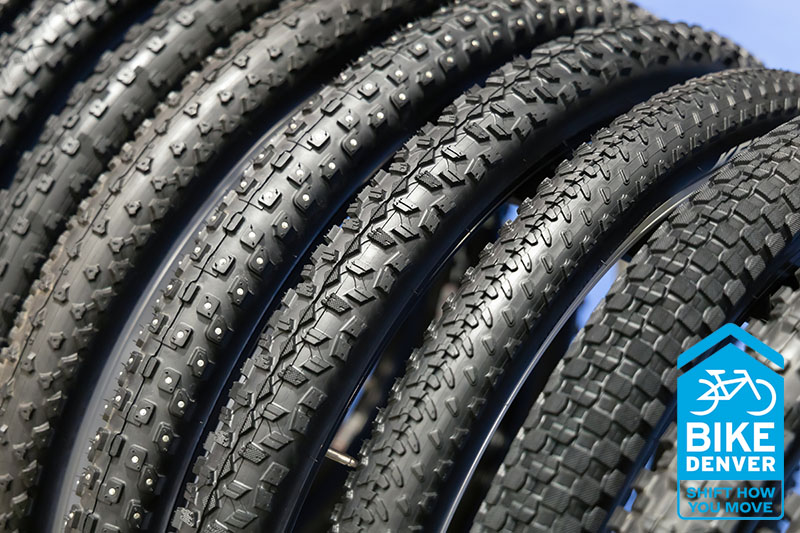
The rim sizing varies according to your riding style, position, and cycling discipline. Hence, giving you accurate wheel size to bike height charts might be quite a challenge.
Nevertheless, once you know your height measurements and inseam, this table should still give you a good estimation of the right size option.
ISO Size for Bike Wheels
| Wheel Size | Available ISO Wheel Bike Sizes |
| 26 Inch | 559 / 571/ 584 / 590 /597 mm |
| 27 Inch | 609 and 630 mm |
| 27.5 Inch | 584 mm |
| 28 Inch | 622 / 635 / 642 mm |
| 29 Inch | 622 mm |
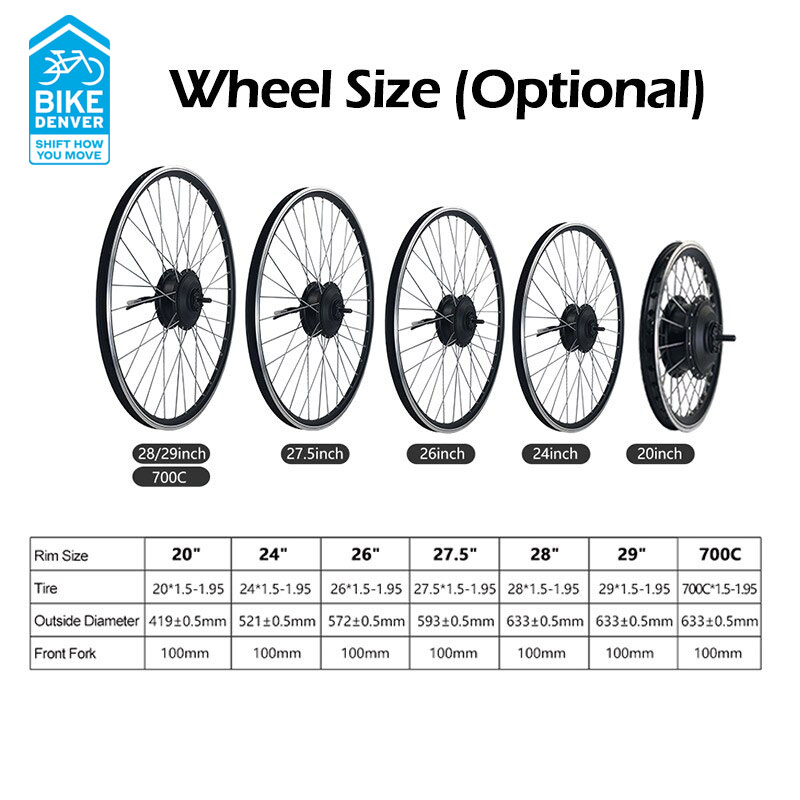
Wheel Sizes and Suitable Rider Heights
| Wheel Size | Required Heights for Riders |
| 26 Inch | > 4’10” (or 149 cm) |
| 27.5 Inch | > 5’5″ (or 165cm) |
| 28 Inch | > 5’6″ (or 168cm) |
| 29 Inch | > 5’6″ (or 168cm) |
Extra: Oversize for Larger Riders
Oversized or plus-bikes are not as common as the other types we have already introduced. They are designed mainly for extremely tall cyclists. Customization is a requirement, which is why these bikes inevitably cost more than regular-sized bicycles.
Dirty Sixer and TrueBike are two popular bike manufacturers that make giant bicycles for large-sized people. Of course, options vary – just like how people’s body measurements do – but here are some of the most mentioned options:
32” Bicycle Wheels (686 mm in ISO)
Any bicycle with wheels bigger than 29” always works best with customized builds. After all, people’s demands for them are pretty low. And for anyone above 6’6” tall, you should also require gravel bikes larger than those sold in cycling stores – and the 32” options are your best bet.
Some argue that tall people can still use 29” wheels. We do not deny it; still, if your budget is generous, do not hesitate to invest in 32 bespoke.
36” Bicycle Wheels (787 mm in ISO)
36-inch tires will be even better than 32”, thanks to the massive attachment angles. The rides will be much more comfortable!
Here’s one major problem: finding a brand willing to make 36” wheels can be pretty challenging. Not to mention, when cornering on 36-inch wheels, the bicycle often feels heavy and sluggish.
39” Bicycle Wheels
Surprisingly, 36” is still not the largest size people desire. While 39” is still a theory at this point, a wide variety of designers and visualizers have already created 3D renders of pedal bikes that work with 39” options.
The concept is special in that there’s a chain-steerer handle involved. Without such workarounds, the bikes would probably clip your toes during cornering.
One major issue such bicycles would encounter is the wheels’ strengths: contrary to popular belief, large wheels are more vulnerable to damage and harm than small ones. That’s why brands like BMXs use small tires (only 20”) to withstand impacts.
How to Choose The Right Sizes for Your Wheels

Double-Check The Dimensions
Regardless of what bike you aim at, their standard, typical dimensions should fall between 26″ (or 66cm) and 29″ (or 73.5cm). These measurements already include mountain and hybrid bikes.
Regarding mountain bikes, finding average-sized wheels at stores is easy for most of us. That said, we strongly suggest you check whether it’s easy to stand tall on this bike when you are not riding it. Both legs should firmly reach the floor; only then can you determine whether this wheel size is perfect for the bike.
For simple road bikes, the measurements are clearly displayed in metric. 650 or 700 would be terrific options. On another note, fans of BMX bikes can breathe a sigh of relief: most of their models work best with 20” wheels, so you don’t need to think too much about the sizes.
Determine Your Needed Tire Width
After scouring through the market, you will realize that most of them are divided into two camps:
- Thin Tires. These tires offer much better speed, though there might be a trade-off. Since they have much lesser road contact and feel much skinnier, the tire pressure required is exceptionally higher than average to sustain their strength. Hence, do not be surprised that your rides get quite bumpy.
Not to mention, skinny wheels wear out faster than average wide tires and are more likely to fall victim to damage.
- Wide Tires. Wide wheels have much more road contact than their thin counterparts – no wonder they deliver steadier rides, more road tractions, and impeccable balance even on uneven surfaces.
Sure, they might not be as quick as thin tires. Nevertheless, they successfully compensate for the speed lack with their incredible dependability.
Seekers of wide tires should find options between 26 and 27.5-inch wheels (equating to 66 and 69.9 cm). Anything smaller than that is considered thin.
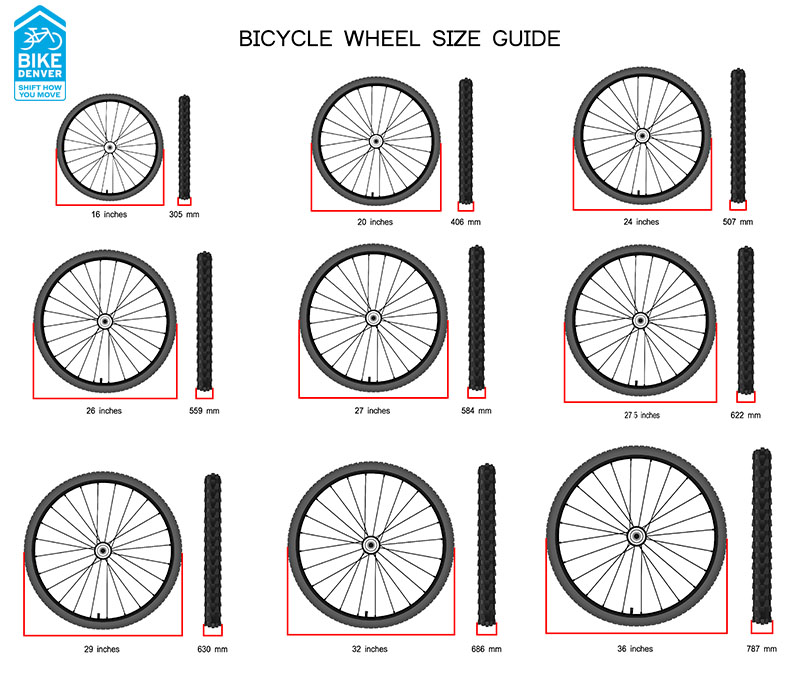
Decide on Knobby Tread vs. Smooth Tires
Another factor to consider is the tire treads. Knobby tread and smooth tires thrive in most bicycle options you can see on the market nowadays.
Smooth ones work best for pavement riding or racing – since they maintain extremely little ground contact on purpose. Yet, people whose living spaces are congested with wet, muddy trails and rough terrains should think of knobby tires. Those who need extra pedal power will like them, too.
Extra: Even smooth tires arrive with knobby tread patterns at times to make it easy for you to tackle different parts. But the vice versa does not apply: bikes with knobby treads should never ride on smooth paths. They will only waste your energy and slow down the trip.
Other Small Tips
- Are the wheels and the bike frame attacked through axle or quick-release skewers? Check that they are compatible.
- Take care of the bearings and the materials. Rims made of carbon fibers are the most commonly recommended due to their combined strength and flexibility.
- Faster hub engagements will increase the tire’s performance.
How to Remove/Reinstall Bike Tires for Mountain Bikers
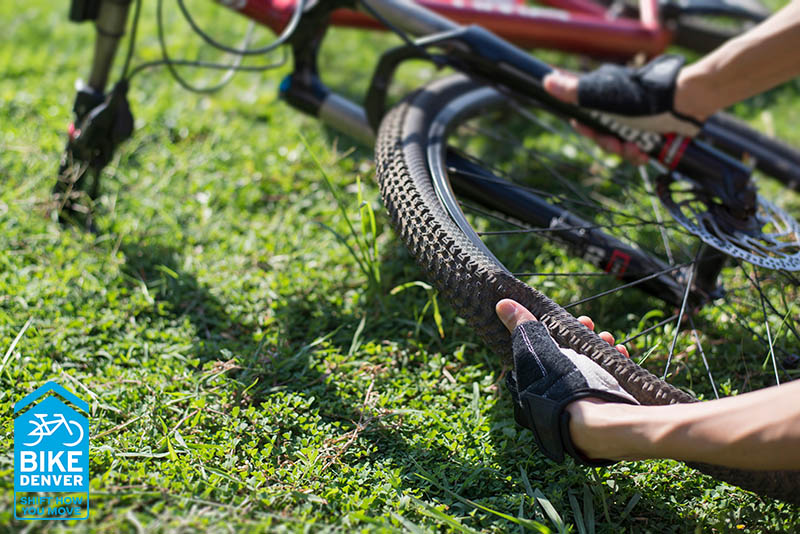
Remove The Tire
- Step 1. Release The Brakes. Does your bike have a cantilever or rim brake type? Release their cable tensions for easier tire removal.
- Step 2. Flip The Bicycle Over. That will make it much easier for riders – especially first-timers to access the bike’s base. But for those who already have mechanic stands, this step is unnecessary.
- Step 3. Remove Axle or Open Quick Releases. If the bikes have quick releases, flip their levers into open positions. Does the lever feel too tight? One way is to use a wheel lever and pry it open.
- Hold it still and loosen the axle’s bolts from the opposite corner. DO NOT pull them off completely; just loosen them.
- Step 4. Lift Your Wheel Off The Fork. Ensure the calipers are not dislodged if rim brakes are on the bikes. For bicycles with disc brakes, pay more attention to the rotors.
Reinstall The Tires
- Step 1. Guide The Wheel Into The Forks. Riders with rim-brake bikes should be careful with the calipers; do not dislodge them accidentally during the reinstallation. Meanwhile, in the case of disc-brake bicycles, remember to guide the rotors to the gap between your brake pads.
- Step 2. Tighten Your Axle. Settle the wheels into dropouts, ensuring the axles are on the bicycle’s non-drive part and match the wheels. Then hold the lever to tighten the nuts, pushing your lever into closed positions for a better bike fit.
- Step 3. Flip The Bike Over. Remember the cables you have just disconnected? Reconnect them again and tighten them properly.
- Step 4. Spin The Wheel. Perform one last check by spinning the wheel; that way, you can confirm the rotor or rim does not rub against the brake pads.
- Does your wheel refuse to spin? Then it might get crooked at the dropouts. Flip back the bike, loosen the axle, and tighten it again.
FAQs
Is a 24-inch or 26-inch wheel bike better?
26-inch due to its greater clearance and longer wheelbase.
Can A Short Person Ride Bikes with 29-Inch Wheels?
Technically, you can, but they will not be as comfortable as 26-inch ones or lower.
Conclusion
Our readers have got their hands on an inclusive and insightful bike wheel size for height, which reveals critical information on ensuring the bike and the wheels are a terrific match. For those who like to travel to mountainous areas or uphills, there are also concise instructions on removing and reinstalling these tires, saving you from numerous hassles and time-costly efforts!
Keeping all these advice pieces in mind will boost your enjoyment of your precious bike to a new level. And, of course, as usual, our inbox is always open to anyone who wants to know more or needs further support about the bike size chart.
